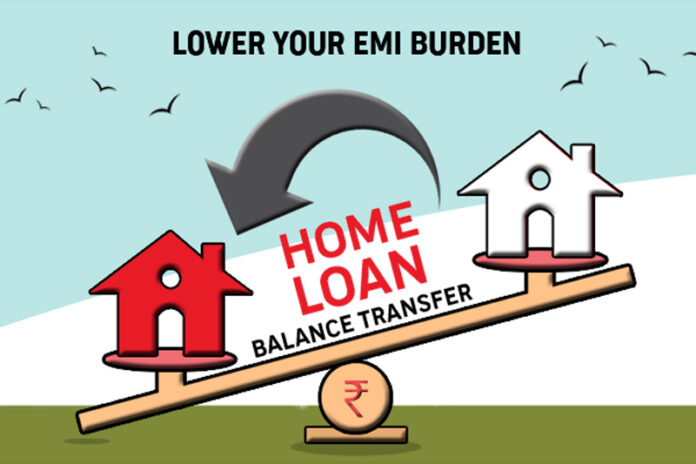Ever witnessed this episode where you have availed a home loan and later realised you could have availed the loan from some other lender at a lower interest rate? Dealing with this may be disheartening. Luckily, today you can avail a lucrative option of home loan balance transfer to another bank or financial institution. Note that, over the years there has been an increase in the home loan borrowers transferring their loan balances. Home loan transfers today account for 20 percent of all the home loans processed.
A home loan transfer or switchover can come across as a very effective means of saving money on your present loan. In the case you are apprehensive about the technicalities linked with the transfer, you are in the correct place. Here in this blog, discussed is a comprehensive guide on the home loan transitioning process. Included are the important pointers that discuss the things you must factor in before switching to another loan.
How is the home loan transfer option advantageous?
There are various parameters you must consider when factoring in the balance transfer option. These involve the amount that is outstanding at present, the EMI proceeds paid every month, the loan repayment tenure that is left and the rate of interest offered by the present lender, the kind of interest rate i.e., fixed, or floating, etc. Note that a fixed rate is linked with MCLR, and floating rate is linked with repo rate. The fixed rate is usually slightly higher than the floating rate, for instance, IndusInd bank MCLR ranges anywhere between 9.05 per cent and 10.30 per cent while is slightly lower and the same case is with UCO bank MCLR and MCLR of any other financial institution.
Also, it is crucial for you to consider the processing charges that may be levied during the transfer process. Once you have factored in all such parameters, you can determine whether this step would be advantageous for you.
Here are some of the ways using which you can transfer your home loan. These include –
- Explore the distinct bank lenders and ensure the rate of interest being charged to you is 1 – 2 per cent less than the existing rate of interest.
- Ensure to read the conditions of your balance transfer well, before signing it.
- Beware of the charges linked with the balance transfer, like the transfer charge that ranges anywhere between 1 and 2 percent of the loan proceeds and other crucial administrative charges.
- Always ensure to keep your score in the correct shape before you apply for balance transfer, as holding an excellent score enhances the chances of getting better terms and conditions and rate of interest.
It is necessary to note that a transfer option is not a prudent option if you are only a few months away from making repayment of your loan as well as interest constituent completely. It is because the balance transfer procedure takes time and may be a costly affair when processing fees and other charges are included.
How much can you save through the home loan balance option?
Home loan services basically consist of a huge amount of funds, and a high rate of interest, ranging anywhere between 8 and 12 per cent per annum. Hence, a slight lower interest rate might allow you to save a massive amount over the long term. The fund that you can save with a balance transfer option depends on the rate of interest you are presently paying, the rate of interest offered by new lenders and loan proceeds. The savings component that you get may be considerable if you opt for transferring your loan proceeds to a lender providing you a considerably lower rate of interest. Let’s take the instance of a potential savings that you may make.
Computing how much amount you can save might appear tricky. However, it is very simple.
For instance, assume the outstanding loan amount is Rs 25 lakh and you are paying a loan EMI of Rs 29,877 every month for a repayment tenure of 12 years. The rate of interest charged by the financial institution you are looking to switch to is 7 per cent. In such a scenario, the payable EMI every month for a tenure of 12 years would be around Rs 25,000. The overall amount repaid would be around Rs 37 lakh with principal and interest constituent combined than around Rs 43 lakh.
You can even consider paying a higher EMI for shorter repayment tenure and repay your home loan quickly while still allowing you to save money. It is advised to transfer your balance on home loan at the earliest during the loan repayment tenure. Doing so would make sure you end up saving to the extent possible.
Decisions linked with finances must not be rushed and it is the scenario with home funding too. A lower interest rate offered by lenders besides the interest rate that you are servicing may be attractive initially but avoid jumping in without reading the terms and conditions. Instead, you must question if it is helpful for you over the long term. The transfer procedure can assist you make the most out of your financial opportunities and avoid nasty surprises.
Ending note
Home loan transfer option permits you to move your loan from one financial institution to another, thus allowing you to get a better rate of interest, terms, and loan proceeds. You must note to evaluate the rate of interest offered to you before availing the loan and the linked expenses like the administrative fees and transfer fees. Moreover, there are specific tips that you must ensure to follow before you opt for the transfer option. These include being aware of the distinct interest rates offered by distinct lenders, being aware of the fees and charges and if you can use the prepayment option to lower the loan burden. Knowing all these can allow you to make an informed decision.
































